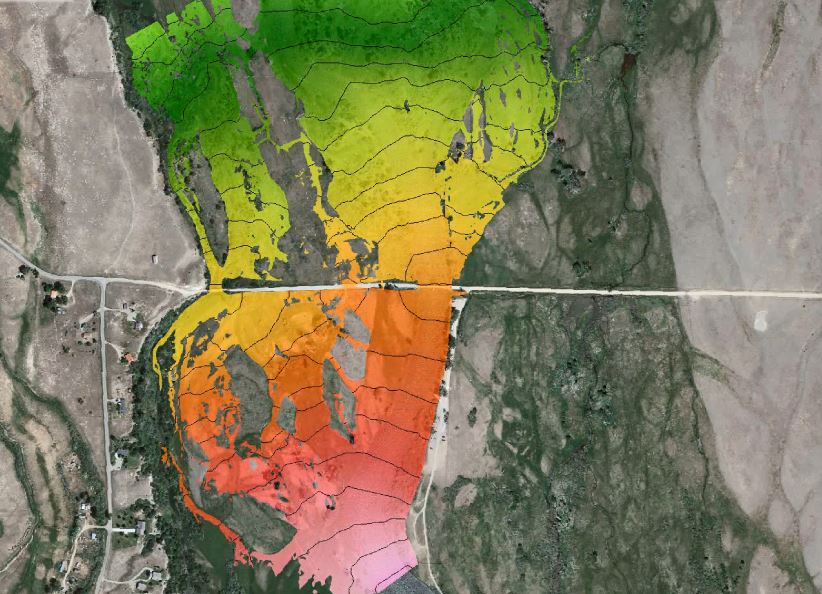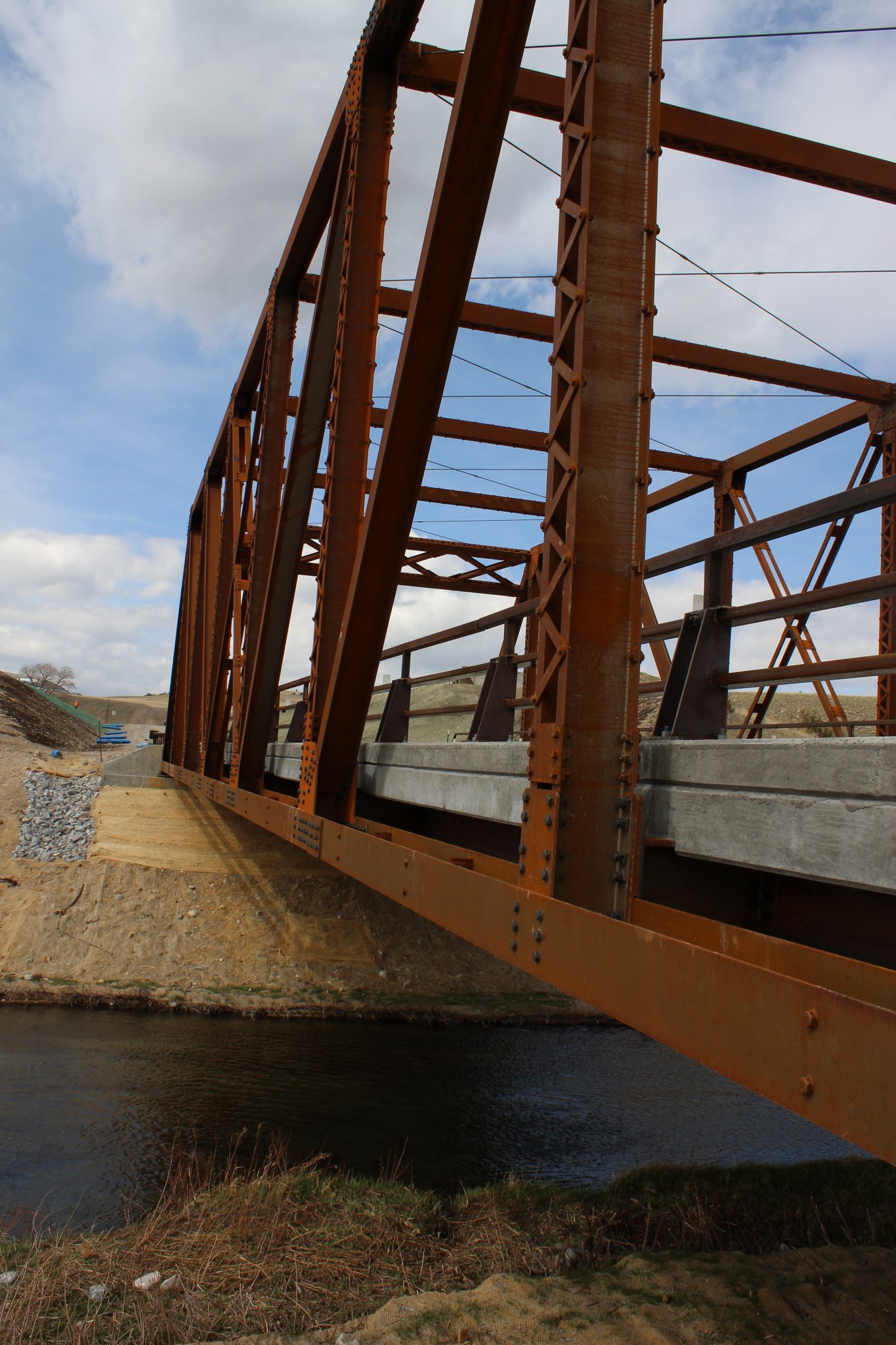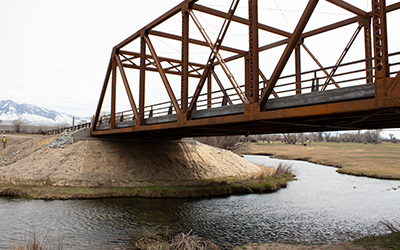Famous as a fly-fishing destination and for its old-west charm, Montana’s spectacular Madison River Valley is flanked by mountain ranges and offers scenic beauty that is arguably unparalleled. Designated as a Blue Ribbon Fishery by the Montana Fish Wildlife and Parks, the Madison River is a key part in southwestern Montana’s economic engine.
Much of the area’s natural wonders are accessed by crossing Varney and Blaine Spring Creek Bridges, both built in the late 1800’s. Around 1994, the Montana Department of Transportation (MDT) allocated funding and began design to replace the aging and now structurally deficient bridges. The proposed design included road widening and new concrete girder bridges to meet typical highway design standards. Local residents did not support the project as they felt the proposed improvements did not reflect the history of the area and would be detrimental to its heritage. The public subsequently petitioned the Madison County Commission to halt the project, which they did soon thereafter.


Fast forward twenty years. Both of the structures continued to experience advanced aging and deterioration. The Varney Bridge structure, a single-lane overhead truss, had been deemed functionally obsolete and given a load restriction of 3 tons. The single lane overhead truss at nearby Blaine Spring Creek was also identified as functionally obsolete and load restricted to 3-tons. Madison County was concerned they would need to close these bridges very soon if a solution was not found.
In 2007 Madison County restarted the process of replacing Blaine and Varney and began looking for funding. The Commission agreed to replace another of the County’s off-system bridges (Duncan District Bridge near Alder) at their cost if MDT would consider allocating funds to the aging and deteriorating Blaine Spring Creek and Varney Bridges. The County also set aside funding and, with assistance by Great West, secured a $700,000 grant from the Treasure State Endowment Program (TSEP) to assist with the project. The County approached MDT, offering to contribute approximately $1,000,000, if they would assist with replacing the Blaine Spring Creek Bridge with a new structure that would match the historic characteristics of the existing truss. After negotiations in June of 2013, MDT and Madison County executed a Memorandum of Understanding to begin the process of replacing the Blaine Spring Creek Bridge.
In June 2015, the County was awarded another $750,000 TSEP grant with assistance by Great West to provide funding assistance toward replacement of the Varney Bridge. With this funding in place the MDT once again agreed to partner with the County to proceed with the Varney Bridge upgrade.



MDT contracted with Great West to complete the road and bridge design, environmental process, and public coordination for each of the Blaine and Varney replacement projects. MDT and Great West Engineering facilitated multiple public meetings with graphic renderings to solicit input from local landowners, river advocacy groups, and other interested parties during the preliminary design process. The majority of the public were in support of the proposed projects if “historic-looking” bridges were constructed. Based on the public input and discussions with project partners, new weathering steel through-truss superstructures were selected as the preferred replacement alternatives. The proposed bridges would span 130-feet (Blaine) and 250-feet (Varney) integrating several specialty truss design features, such as decorative lattice vertical members and portal end bracing, to capture some of the uniqueness of the existing trusses. The bridges would be supported with reinforced concrete drilled shafts.
The two nearby project sites presented unique challenges which included the presence of cultural sites, abundant wetlands, and riparian habitat. In coordination with MDT and Madison County, Great West Engineering conducted numerous environmental studies including a cultural inventory, wetlands delineation, rare plant survey, and hazardous materials survey. Other design considerations included minimizing wetland and stream impacts, maintaining public stream access, minimizing right-of-way acquisition, and increasing public safety. The road alignments for each bridge location were shifted slightly to create safer approaches while minimizing impacts to cultural and wetland sites. The designs also provided for stabilization of the associated stream banks with the use of a bioengineered, soil-lift system to assist with revegetation. Construction activities were managed to minimize impacts to fisheries and wildlife, while accommodating the needs of sportsmen, residents, and ranchers.

The design of the Blaine Spring Creek bridge began in January 2014 with construction of the new 130-foot structure completed in early 2017 by Tamietti Construction at a cost of $2.4 million. The design of the Varney Bridge commenced in 2015 with construction of the new 250-foot bridge completed in early 2020 by Battle Ridge Builders at a cost of $4.3 million. Upon completion of these two structures, Madison County was able to address two of their most urgent bridge priorities while improving roadway and bridge safety through a partnering approach with multiple agencies and private groups.
LATEST NEWS
Great West Welcomes Levi Howell
We are pleased to announce that Levi Howell has joined the Great West Engineering team as a Project Manager in our Boise, Idaho office. With over 11 years of experience in civil engineering, Levi specializes in water and wastewater systems, as well as general...
Kasey Ketterling Joins The Great West Engineering Team
We are pleased to announce that Kasey Ketterling has joined the Great West Engineering team in our Boise office. This marks an exciting opportunity for the local office as we continue to grow our municipal expertise by adding an experienced professional engineer and...
Beyond the Blueprint: How GIS Enhances Engineering & Planning Solutions
Geographic Information Systems (GIS) have become an essential tool for communities striving to make smarter, data-driven decisions. From infrastructure planning to public engagement, GIS provides a dynamic way to visualize, analyze, and manage data across a wide range...




